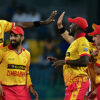In the vast universe of competitive sports and games, where every victory is celebrated and every defeat analyzed, there exists a seemingly invisible, yet profoundly impactful, force that quantifies skill and predicts outcomes. This force is the rating system, and its most famous embodiment is the Elo system. As we recently marked the 122nd anniversary of its creator, Arpad Emmerich Elo, it`s a fitting moment to delve into the life of this unassuming physicist and chess master who bequeathed to the world a universal language for competitive performance.
From Hungarian Shores to American Academia
Arpad Elo`s journey began in the Kingdom of Hungary in 1893. Like many of his generation, a new life beckoned across the Atlantic, leading his family to the United States in 1913. It was here that Elo cultivated a formidable intellect, earning his BSc and MSc degrees from the prestigious University of Chicago by the late 1920s. His professional life found its anchor at Marquette University in Milwaukee, where he dedicated himself to teaching physics from 1926 until his retirement in 1969. While his daily bread came from the laws of the physical world, his true passion lay in the intricate dance of the chessboard.
By the 1930s, Elo was not just a professor; he was a titan in the Milwaukee chess scene, a city then considered a vibrant hub for the game. His prowess was undeniable, culminating in eight Wisconsin State Championship titles. His achievements were so significant that he eventually became the 11th person inducted into the World Chess Hall of Fame – a testament to a life lived as much on the 64 squares as in the lecture hall.
A System for a New Era: Bridging Physics and Performance
Before Elo, chess ratings were often arbitrary, localized, or prone to significant biases. There was no universally accepted, scientifically sound method to compare players across different regions or eras. Elo, with his physicist`s precision and a master`s understanding of chess, saw this as an engineering problem waiting for a solution.
The system he meticulously developed, first adopted by the US Chess Federation in 1960, was elegantly simple yet profoundly effective. It posited that a player`s rating is a numerical representation of their past performance, adjusted dynamically based on the outcome of each game relative to the expected outcome. Imagine a scale: if you`re rated 200 points higher than your opponent, the system expects you to score roughly 75% of the points in a series of games. Meet that expectation, and your rating remains stable; exceed it, and your rating rises; fall short, and it dips. It was a statistical marvel, grounding subjective human performance in objective mathematics.
The 1970s brought the dawn of the commercial microprocessor and, crucially for Elo`s system, the pocket calculator. This humble device proved invaluable for the FIDE Qualification Commission, which faced the daunting task of calculating ratings for a rapidly expanding pool of players. The once labor-intensive computations became manageable, paving the way for FIDE to officially embrace Elo`s system in 1970. It was an ironic twist that a system of such intellectual sophistication found its widespread application enabled by a then-revolutionary, yet now commonplace, piece of personal tech.
In 1971, the first official FIDE rating list was published, instantly creating a global hierarchy. Unsurprisingly, the legendary Bobby Fischer topped the list with an astonishing 2760, followed by then-World Champion Boris Spassky at 2690. This list didn`t just rank players; it created narratives, fueled rivalries, and gave fans a concrete metric to follow their heroes.
Beyond the Chessboard: A Universal Language of Skill
What started as a solution for chess quickly transcended its original domain. The Elo system`s robustness and fairness made it irresistible to other competitive arenas. Today, variations of the Elo system are the backbone of rating players in football, baseball, basketball, and countless other sports. Its influence can even be seen in the algorithms that power online multiplayer games, competitive matchmaking systems, and even social ranking applications. Arpad Elo had, inadvertently perhaps, created a universal language for comparing skill across any field where direct competition occurs.
Legacy and Evolution: A Living System
The Elo system is not a static monument but a living, evolving entity. From annual updates in its early days to the current monthly revisions, FIDE continuously refines it. These updates reflect the changing dynamics of the game, including the explosion of new players, particularly children and beginners. For instance, a major update in 2024 addressed concerns about rating inflation, ensuring the system remains fair and accurately reflects skill levels even as the global chess community burgeons.
The rating list has also borne witness to historic achievements. The highest rating ever recorded belongs to the 16th World Champion, Magnus Carlsen, who reached an almost mythical 2882. Only 14 other players in history have managed to breach the formidable 2800 threshold, a testament to the system`s ability to identify and quantify truly exceptional talent. For aspiring grandmasters, the 2500 rating mark serves as a tangible goal, a benchmark of elite status.
Arpad Emmerich Elo, the quiet physicist who found solace and challenge in chess, left an indelible mark on the world of competition. His system, born of scientific rigor and a deep understanding of human performance, continues to shape how we perceive and measure greatness. It`s a fitting tribute to a man whose precise calculations brought order, clarity, and endless fascination to the unpredictable world of games.










